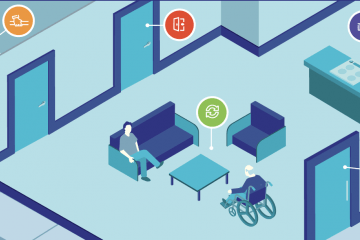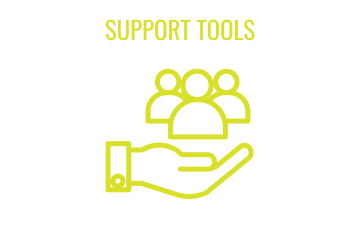How to Set Up an Accessible and Comfortable Home Office
The pandemic forced the adoption of new ways of working – most notably, shifting to working from home. The ability to work from home is something that employees with disabilities had been asking for for years. In fact, in 2003, the US Equal Employment Opportunity Commission published guidelines for employers to offer working from home as a reasonable ADA accommodation. However, it took a major global pandemic to prove to employers and executives that working from home is feasible and could lead to increased productivity and efficacy.
If pandemic life taught us anything, it’s the power of adaptability and accessibility. As a result, having to adapt to a new way of working might have helped companies expand hiring pools and make work more accessible for people with disabilities.
At the same time, it has become more important to be able to design accessible, comfortable, and functional workspaces from home. Some critical factors to consider are lighting, seating, and space.
The home office does not need to take up that much space; in fact, you could use a closet or under-stair space. These workspaces could be isolated from the rest of the home by closing the door or adding a partition. It is helpful to make use of space with ample natural lighting to improve mood – as research shows – and increase visibility during video calls. A higher vantage point for the video camera is preferable. A stand could be used for the screen (and camera) to help ensure proper posture.
However, as the distinction between work and home life blurs, it is imperative to be mindful of the threats that distraction poses to productivity. At home, one will be accountable to oneself and relatively isolated – so the temptation to procrastinate by surfing the internet will likely be stronger than in other contexts. Time management apps like Toggl, TomatoTimer, and StayFocused can help one stay focused. It is also important not to swing too far in the other direction and completely neglect any time for breaks.
It is crucial to consider the space surrounding the desk, specifically whether a wheelchair or other mobility device could navigate it. The door may require modifications like widening or adjusting the direction the door opens. Rise and fall desks can be helpful because they allow accessible entrance and exit for wheelchair users, and they can be used as standing desks if required. It’s good to think about the desk’s sturdiness, especially if you will need it for support when standing up or reaching for shelves. Desk drawers may have organizational benefits and can be used to store snacks for keeping one's energy up throughout the day.
One may consider using wireless devices to minimize tripping hazards, namely, loose wires. Tools such as cable ties can be used to organize cords and keep the space uncluttered. Visually impaired people may consider brightly painting essential objects, such as light switches, fan switches, and doorknobs. The office could be outfitted with voice- or proximity-activated devices. It is important to keep objects such as stationery at arm’s length. Folders and accessories may be color-coded and labeled with embossed letters. It is helpful to maintain the furniture in the same position for people with visual impairments.
In terms of one’s computer usage, a reliable internet connection, and accessible software (such as speech-to-text and text-to-speech) are invaluable. There are a myriad of applications available that make work and team collaboration accessible, for example, Mural, Slack, Google Hangouts Meet, Microsoft Teams, and Zoom – of course. Krisp is an app that improves voice clarity in voice calls for people who are hard of hearing, and it works with most web conference apps. Web Captioner provides real-time captioning.
As you can see, setting up a home office can be easily accomplished with some creativity and flexibility. For most people with disabilities, remote work can increase job prospects and overall productivity. Hopefully, the working-from-home culture will continue to grow, and fundamentally reshape the workforce to be truly accessible and inclusive of all types of employees.







